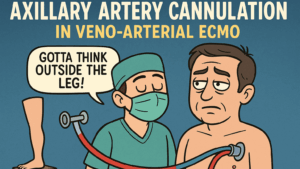Objective: Patients on extracorporeal membrane oxygenation (ECMO) are often complex and have a high mortality rate. Currently, risk assessment and treatment decisions for patients receiving ECMO are controversial. Therefore, we sought to identify risk factors for mortality in patients receiving ECMO and provide a reference for patient management.
Methods: We retrospectively analyzed the clinical data of 199 patients who received ECMO support from December 2013 to April 2023. Univariate and multivariable logistic regression analyses were used to identify risk factors. The cutoff value was determined by receiver operating characteristic (ROC) curve analysis.
Results: A total of 199 patients were selected for this study, and the mortality rate was 76.38%. More than half of the patients underwent surgery during hospitalization. Multivariable logistic regression analysis revealed that continuous renal replacement therapy (CRRT) implantation (OR = 2.994; 95% CI, 1.405-6.167; p = 0.004) and age (OR = 1.021; 95% CI, 1.002-1.040; p = 0.032) were the independent risk factors for mortality. In the ROC curve analysis, age had the best predictive effect (AUC 0.646, 95% CI 0.559-0.732, p = 0.003) for death when the cutoff value was 48.5 years. Furthermore, in patients receiving combined CRRT and ECMO, lack of congenital heart disease and previous surgical history were the independent risk factors for mortality.
Conclusions: CRRT implantation and age were independent risk factors for patients with ECMO implantation in a predominantly surgical cohort. In patients receiving a combination of CRRT and ECMO, lack of congenital heart disease and previous surgical history were independent risk factors for mortality.
Keywords: Extracorporeal membrane oxygenation; acute renal injury; continuous renal replacement therapy; mortality; risk factors.







